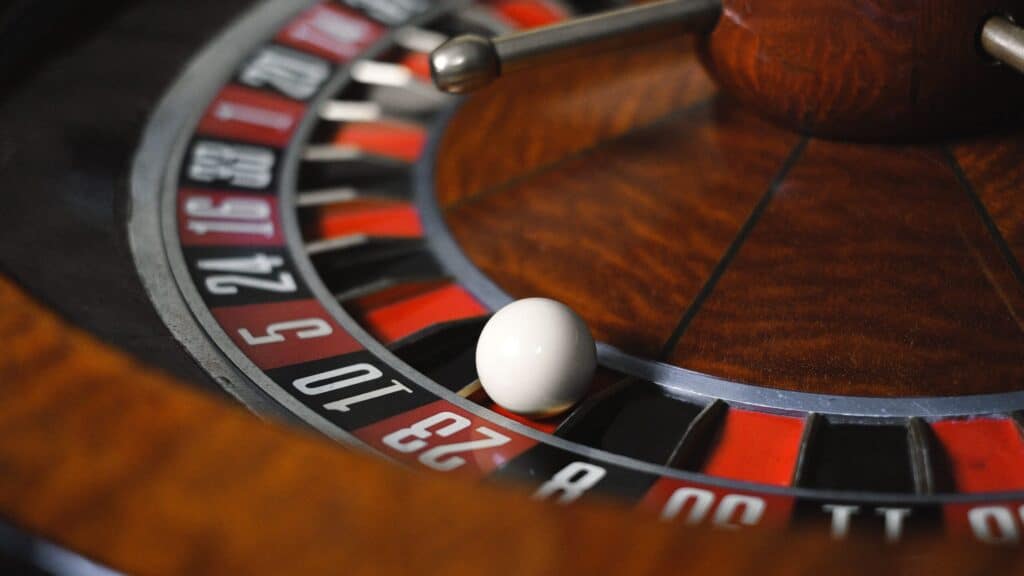Roulette, often considered a game of pure chance, actually offers a surprisingly complex landscape for strategic play, especially for gamblers who move beyond basic bets and seek a more sophisticated approach. This detailed guide is crafted for those advanced players and ambitious beginners aiming to delve deeper into roulette strategies, moving past common misconceptions and towards a more nuanced understanding of how to maximize their winning potential and manage risk effectively at the roulette table.
Understanding the Roulette Landscape for Advanced Strategies
To truly master roulette, it's essential to first understand the game beyond its glittering surface. Roulette isn't just about spinning wheels and lucky numbers; it's a game of probability and odds, governed by mathematical principles. Recognizing the different types of roulette wheels – European and American – is paramount. The European wheel, with its single zero, offers significantly better odds for the player compared to the American wheel, which includes both a single zero and a double zero. This seemingly small difference dramatically alters the house edge: approximately 2.7% on a European wheel versus about 5.26% on an American wheel. Choosing the right wheel is therefore the first strategic decision an informed player makes.
Advanced roulette strategy extends beyond simply knowing the odds; it involves understanding the types of bets available and how they interact with these odds. Bets in roulette fall into two main categories: inside bets and outside bets. Inside bets, placed on specific numbers or small groups of numbers, offer higher payouts but come with lower probabilities of winning. Examples include straight bets (on a single number), split bets (on two numbers), and street bets (on three numbers). Outside bets, conversely, cover larger groups of numbers, offering lower payouts but significantly higher chances of winning. These include bets on color (red or black), even or odd numbers, and high or low numbers (1-18 or 19-36). Understanding this dichotomy is crucial for tailoring a strategy to one's risk tolerance and gameplay goals.
Advanced Betting Systems: Beyond the Basics
While no strategy can eliminate the house edge in roulette – a fundamental aspect of the game's design – advanced betting systems aim to structure bets in a way that can capitalize on winning streaks and manage losses more efficiently. It's critical to preface this by stating that betting systems are not foolproof methods to guarantee winnings, but rather structured approaches to wagering. They provide a framework for how and when to bet, rather than changing the underlying odds of the game.
The Martingale System: Risk Amplification
The Martingale system is perhaps the most well-known, and often misunderstood, betting system. Its core principle is deceptively simple: double your bet after every loss, with the idea that when you eventually win, you'll recover all previous losses plus a small profit equal to your original bet. For example, starting with a $10 bet and losing, the next bet becomes $20, then $40, and so on, until a win occurs. While theoretically, this system seems sound, in practice, it carries substantial risks. The exponential increase in bet size after each loss can quickly lead to wagering very large sums to recover relatively small initial losses. Furthermore, table limits in casinos can prevent a player from continuing to double their bet, effectively halting the system's progression and potentially leading to significant losses. The Martingale system is a high-risk, high-reward strategy that demands a large bankroll and a tolerance for substantial volatility.
The D'Alembert System: Balancing Risk and Reward
The D'Alembert system is considered a more conservative progression betting system compared to the Martingale. Instead of doubling the bet after a loss, the D'Alembert system increases the bet by a fixed unit after each loss and decreases it by a unit after each win. This gentler progression makes it less aggressive and reduces the risk of rapidly escalating bets. For instance, if a player starts with a $10 bet and loses, the next bet becomes $20. If they lose again, the next is $30. However, if they then win, the next bet is reduced back to $20. The D'Alembert system aims to profit from an equal number of wins and losses, based on the gambler's fallacy that wins and losses will even out over time. While it's less risky than the Martingale, it still relies on the same flawed premise and doesn't alter the fundamental house edge. Its advantage lies in potentially extending playing time and providing a more controlled betting experience.
The Fibonacci System: Leveraging a Mathematical Sequence
The Fibonacci system is based on the Fibonacci sequence, a series of numbers where each number is the sum of the two preceding ones (1, 1, 2, 3, 5, 8, 13, 21, etc.). In the context of roulette, this sequence dictates the progression of bets. After a loss, you move to the next number in the sequence to determine your next bet size. After a win, you move back two numbers in the sequence. Starting with a $10 bet (represented as '1' in the sequence), a loss would move you to the next '1' (another $10 bet if using $10 units). A subsequent loss moves you to '2' ($20 bet), then '3' ($30 bet), and so on. A win would then move you back two steps in the sequence to adjust the next bet. The Fibonacci system is less aggressive than the Martingale and even the D'Alembert, offering a slower rate of bet increase and decrease. It's designed to capitalize on winning streaks while mitigating losses during losing streaks. Like other progression systems, it doesn't change the odds but provides a structured betting approach that some players find more psychologically manageable and potentially longer-lasting in play.
The Labouchère System: Cancellation System Complexity
The Labouchère system, also known as the cancellation system, is a more complex and flexible negative progression system. It begins with the player creating a line of numbers, for example, 1-2-3. The initial bet is the sum of the first and last numbers in the line (1+3 = 4 units). If the bet wins, these numbers are crossed out, and the player continues with the remaining line (in this case, just '2', so the next bet is 2 units). If the bet loses, the amount lost (4 units) is added to the end of the line, making it 1-2-3-4. The next bet is then the sum of the new first and last numbers (1+4 = 5 units). The goal is to cancel out all numbers in the line, theoretically resulting in a profit equal to the sum of the initial line (1+2+3 = 6 units in our example). The Labouchère system is more adaptable than other progression systems, allowing players to customize their starting line and thus adjust the risk and reward levels. However, losing streaks can lead to rapidly lengthening lines and increasingly large bets. Success in the Labouchère system depends on canceling the line before hitting table limits or exhausting one's bankroll.
Advanced Roulette Strategies: Beyond Betting Systems
Moving beyond betting systems, advanced roulette play incorporates elements of wheel analysis, dealer signature observation, and exploiting specific casino conditions. These strategies are significantly more complex and often require a deep understanding of the game's mechanics, as well as keen observational skills.
Wheel Bias and Sector Targeting: Exploiting Imperfections
The concept of wheel bias stems from the idea that not all roulette wheels are perfectly random. Due to manufacturing imperfections, wear and tear, or subtle imbalances, some wheels may exhibit a bias towards certain numbers or sections of the wheel. While modern roulette wheels are built to very high precision standards, and casinos regularly maintain and check their equipment, the theoretical possibility of bias still exists. Historically, advantage players have sought to identify biased wheels by meticulously recording the results of thousands of spins. Statistical analysis is then used to detect if certain numbers or sectors are appearing more frequently than probability would dictate. If a bias is detected, players can then focus their bets on these favored sections to gain a statistical edge. However, identifying and exploiting wheel bias in contemporary casinos is exceedingly difficult. Casinos employ rigorous wheel maintenance and monitoring, and any significant bias is likely to be quickly corrected. Furthermore, even if a bias exists, it's likely to be subtle and require an enormous sample size of spins to confirm with statistical significance – often far beyond what's practical in a real casino setting. Therefore, while wheel bias remains a topic of interest in roulette lore, its practical applicability as a consistently profitable strategy in modern casino environments is highly questionable.
Dealer Signature: Observing Patterns of Spin
Dealer signature is a more nuanced and controversial concept in advanced roulette play. It posits that some dealers, unconsciously or otherwise, may develop a consistent pattern in how they spin the wheel and release the ball. This consistent action could, theoretically, lead to non-random ball drops, favoring certain sections of the wheel over others. Advocates of dealer signature observation suggest that by carefully watching a particular dealer over many spins, players might be able to discern subtle patterns in their spin technique. This might involve noting the speed of the wheel, the velocity and angle of the ball release, and any consistent rhythm in their actions. If a pattern is detected, players could then adjust their bets to target the predicted landing zones. However, the existence and exploitability of dealer signature are heavily debated. Casinos employ professional, highly trained dealers whose aim is to ensure randomness and prevent any predictable patterns. Any dealer exhibiting a consistent and exploitable signature would likely be quickly identified and retrained or removed. Moreover, even if a subtle signature exists, discerning it from random variation would require extremely keen observation and a large number of spins. The conditions in a busy casino environment – distractions, varying dealers, and the inherent randomness of the game – make consistently and profitably exploiting dealer signature exceptionally challenging, and for many, it remains in the realm of theoretical advantage play rather than a reliable practical strategy.
Visual Ball Tracking: Predicting the Outcome
Visual ball tracking is perhaps the most actively discussed and debated "advantage play" technique in modern roulette. It involves skilled players attempting to visually predict where the ball will land on the roulette wheel by observing its trajectory and speed as it slows down and interacts with the deflectors (rhomboids) on the wheel. Proponents of visual ball tracking argue that with practice and a trained eye, it's possible to estimate the sector of the wheel where the ball is most likely to settle, even in the last few rotations before it drops. This prediction is based on factors like the ball's deceleration rate, its angle of descent, and the wheel's rotation speed. Advanced visual ball tracking may also incorporate techniques like sector betting and consideration of the final resting position of the rotor (the inner, numbered part of the wheel). Some players even use sophisticated tools or software to aid their predictions, though casinos strictly prohibit the use of electronic devices at the tables. The feasibility and profitability of visual ball tracking are highly contested. Casinos actively take measures to counter visual trackers, such as using low-profile deflectors, varying wheel and ball speeds, and training dealers to spin in a less predictable manner. The inherent unpredictability of the ball-wheel interaction, combined with the speed of the game and casino countermeasures, makes consistently accurate visual ball tracking exceptionally difficult. While some skilled individuals may possess the ability to gain a small edge through visual tracking under ideal conditions, it's far from a guaranteed winning strategy and requires significant skill, practice, and favorable casino conditions.
Psychological Aspects and Bankroll Management
Beyond mathematical strategies and observational techniques, the psychological dimension of roulette and effective bankroll management are critical components of advanced play. Roulette, like all casino games, can be emotionally charged, and mastering one's mindset and financial discipline is often as important as understanding betting systems or wheel mechanics.
Emotional Control and Disciplined Play
Maintaining emotional control is paramount in roulette. The game's fast-paced nature and the swings of fortune can easily lead to impulsive decisions and deviations from pre-planned strategies. Chasing losses – increasing bets in desperation to recover previous losses – is a common pitfall that can rapidly deplete a bankroll. Similarly, becoming overconfident after a win streak and making excessively large or risky bets can quickly reverse gains. Advanced roulette players approach the game with a detached and analytical mindset. They adhere strictly to their chosen strategy and bankroll limits, regardless of short-term wins or losses. They recognize that variance is inherent in the game, and streaks of good or bad luck are temporary fluctuations that shouldn't dictate their long-term approach. Emotional discipline involves setting clear win and loss limits before starting a session and sticking to them rigorously. It means viewing losses as part of the game's cost and wins as incremental progress towards long-term goals, rather than emotional highs or lows. Cultivating a detached and disciplined mindset is crucial for sustainable and rational roulette play.
Effective Bankroll Management: The Cornerstone of Longevity
Effective bankroll management is arguably the most critical skill for any serious roulette player. It's the practice of managing one's gambling funds in a way that minimizes the risk of ruin and maximizes playing time and potential for long-term profitability (or at least, minimizing losses). A fundamental principle of bankroll management is to only gamble with money one can afford to lose without impacting essential living expenses. Gambling should be viewed as entertainment expenditure, not as a source of income or a solution to financial problems. A common guideline is to divide one's total bankroll into smaller betting units. For example, a player with a $1000 bankroll might choose a $10 unit size, giving them 100 units to play with. The appropriate unit size depends on the player's risk tolerance and the volatility of their chosen strategy. More aggressive strategies like the Martingale require larger bankrolls and smaller unit sizes due to the potential for rapid bet escalation. Setting stop-loss and stop-win limits is another crucial aspect of bankroll management. A stop-loss limit is a predetermined amount of money a player is willing to lose in a session. Once this limit is reached, the player stops playing, regardless of whether they feel a win is "just around the corner." A stop-win limit is a target profit level; once reached, the player also ends the session, securing their winnings and avoiding the temptation to gamble them back. Regularly tracking wins and losses, and periodically reviewing and adjusting bankroll management strategies, is also essential for long-term success. Effective bankroll management isn't about guaranteeing wins, but about ensuring the longevity of one's playing career and mitigating the risks inherent in roulette gambling.
Conclusion: The Advanced Roulette Player's Mindset
Becoming an advanced roulette player is a journey that extends far beyond simply learning betting systems or understanding odds. It requires a synthesis of strategic knowledge, observational skills, psychological discipline, and robust bankroll management. While roulette, at its core, remains a game of chance with an inherent house edge, a sophisticated approach can significantly enhance a player's experience, improve decision-making, and potentially optimize their winning chances within the constraints of the game's probabilities. It's crucial to reiterate that no strategy can overcome the house edge in the long run, and roulette should always be approached as a form of entertainment with an understanding of its inherent risks. Advanced strategies are not magic formulas for guaranteed profit, but rather tools for structuring play, managing risk, and making informed decisions at the roulette table. The true hallmark of an advanced roulette player is not necessarily about consistently winning, but about playing rationally, responsibly, and with a deep understanding of the game's complexities and one's own limitations. As the landscape of casinos evolves, and technology introduces new dimensions to gambling, the advanced roulette player must remain adaptable, continually learning, and critically evaluating the ever-changing dynamics of this timeless casino game.



